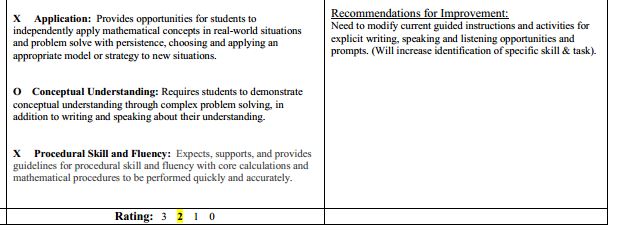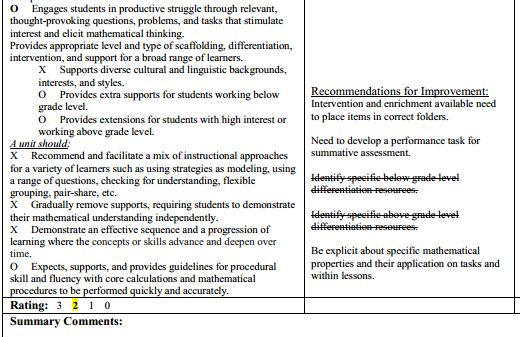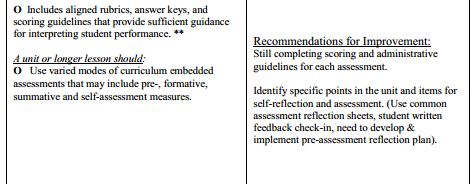I’ve been thinking a lot about effective effort. Should I expect students to give 100 percent effective effort if I don’t give 100 percent? These thoughts are a work in progress. Right now I’m examining effort characterized through the lens of The Skillful Teacher and the 100% factor–a term to describe how both student and teacher should each give 100 percent to their respective responsibilities.
The Skillful Teacher identifies six attributes of effective effort: time, focus, resourcefulness, strategies, use of feedback, and commitment. It’s not realistic to expect students to give 100 percent, every class period, every single day. They’re kids; but I can give them abundant opportunities to experiment with these attributes–if I’m giving 100 percent.
Time
Student: Do I budget my time, sometimes an extended amount of time, to meet high expectations? Do I not persist because the task is challenging and requires more time than I want to give?
Teacher: When assigning a project or when I expect “more time than usual” to be spent on an assignment, do I estimate how much time will that be? Do I share that with the students? Do I negotiate time limits? Do I provide my students sufficient time in class to begin an assignment or project? Do I budget time in class to work on large projects?
Comment: I wish I had asked myself at least one of those questions when I assigned the subtracting integers student portfolio project.
Focus
Student: Do I work with minimal distractions? Do I have a clear idea of the objective, the criteria for success, and exemplars so that I maintain focus on what the assignment is asking me to do?
Teacher: Is the objective clear; have I provided exemplars and explained the criteria for success? Do I monitor student work time by helping students prioritize and refocus their efforts on what is important? Is the work time environment conducive to learning?
Comment: I provide clear directions and criteria for success, but my 100% factor throttles down with helping students prioritize and refocus. When I had a homeroom, I created a solid work time environment, but I did not check in with each student and help prioritize their work. Some kids need that.
Resourcefulness
Student: Do I attend math lab or seek the teacher for help? Do I have a study buddy, or study group? Do I use a list of online resources, textbooks, etc?
Teacher: Am I available to students? If students are not resourceful, do I insist they attend math lab? Do I model how to use various resources and where to find them? Have I provided a list of resources that are readily available?
Comment: I have mixed results in this area. In the first quarter I identified certain students and it was mandatory they attend math lab on a particular day of the week. As we made our way into the second quarter, I didn’t keep up with it. Now that we are at mid-term, I need to pull up the throttle. On a positive note I do have to say my students can easily access the online resources I’ve posted in Canvas.
Strategies
Student: What reading, writing, thinking, and reasoning strategies do I use? What study tools do I create? What graphic organizers or summarization techniques do I use? Do I know what to do when a strategy isn’t working?
Teacher: Do I teach strategies for transfer? Am I modeling relevant mathematical practice(s) and study strategies so my students can apply them? Do I model reading fix-up strategies and explicitly teach thinking and reasoning strategies?
Comment: I can write a thousand words on how I can improve on this topic. Our school improvement plan is in its second year of implementing thinking strategies in every subject. I’m still working on embedding them in my teaching. With respect to study tools, I sometimes fall off the wagon and forget to assign a study tool such as creating a practice test. Most of my students would not think to do it because it takes time.
Use of feedback
Student: Do I apply or use feedback in order to improve my performance? How does that feedback inform me of my progress?
Teacher: Do I give timely feedback and allow students to implement it? Do I provide student-friendly rubrics and criteria for success as a means of providing feedback? Does my feedback include other attributes of effective effort?
Comment: How do I readjust my lesson based on the feedback the students have given me? I devote a lot of time to providing feedback, both written and oral. Where I can improve is differentiating each lesson based on the feedback the students give me.
Commitment
Student: Does my work ethic demonstrate a commitment to learning? Am I reflective and do I readjust my efforts to achieve my goals?
Teacher: Have I developed stamina in my students? Do I help students set goals that are specific, measurable, attainable, realistic, and timely?
Comment: My favorite question I ask myself is, “Are you interested, or are you committed?” Some days I have the stamina so I’m committed, other days I don’t have the energy, so I’m interested. I think that holds true for students as well.



